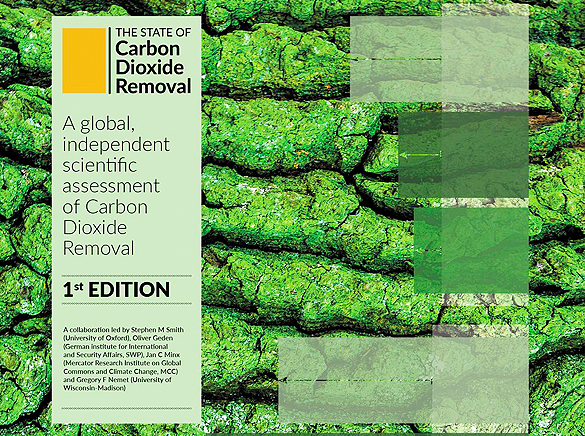Report: the State of Carbon Dioxide Removal Independent Scientific Assessment of Carbon
The report finds a gap between proposed CDR deployment and what will be needed to meet the Paris temperature goal to limit warming to well below 2°C and pursue efforts to achieve 1.5°C.
Innovation in CDR has expanded substantially, exemplified by R&D, in patents and capacity investment, says the report by leading research institutes in the field. CDR has been subject of increasing public attention, and the peer-reviewed scientific literature now consists of over 28,000 English-language studies, growing at a faster rate than for climate change as a whole.
Virtually all current CDR (99.9% or 2 GtCO2 per year) comes from conventional management of land, primarily via afforestation and reforestation. Only a tiny fraction (0.1% or 0.002 GtCO2 per year) results from novel CDR methods which involve storing captured carbon in the lithosphere, ocean or products.
Examples of novel CDR include bioenergy with carbon capture and storage (BECCS), biochar, and direct air capture with carbon capture and storage (DACCS).
While scenarios show that the bulk of CDR deployment will occur in the second half of the century, those levels will only be feasible if we see substantial new deployment in the next 10 years – novel CDR’s formative phase. Almost all scenarios that limit warming to 1.5°C or 2°C require novel CDR.
We find a gap between proposed CDR deployment and what will be needed to meet the Paris temperature goal to limit warming to well below 2°C and pursue efforts to achieve 1.5°C.
About 120 national governments have a net-zero emissions target, which implies using CDR to counterbalance residual emissions. But few have actionable plans for developing CDR, particularly for novel methods.
The figure below shows that CDR is needed in scenarios to meet the Paris Agreement’s temperature goal, in addition to reducing emissions.
The report is intended to regularly inform researchers, policymakers and practitioners on the state of progress, by systematically collecting and analysing the vast amount of data and developments in many parts of the world. If we are to meet the temperature goal of the Paris Agreement, scaling up novel CDR, expanding land-based CDR and the rapid reduction of emissions are urgent priorities.
“In the coming years, this global CDR report should continue to regularly inform policymakers on the state of progress, by systematically collecting and analysing the vast amount of data and developments in many parts of the world,” said Artur Runge-Metzger, Former Director, EU Commission Directorate-General on Climate Action.
